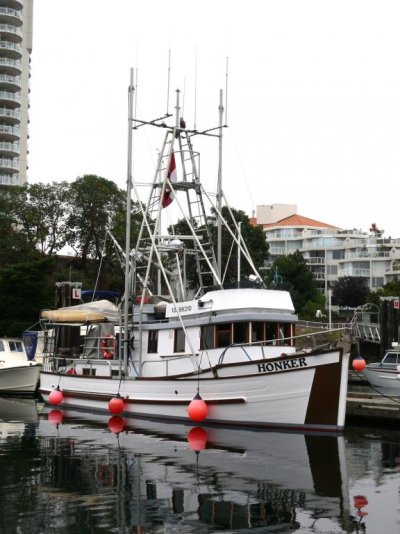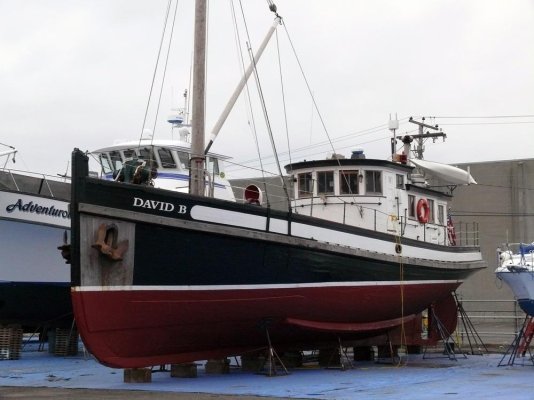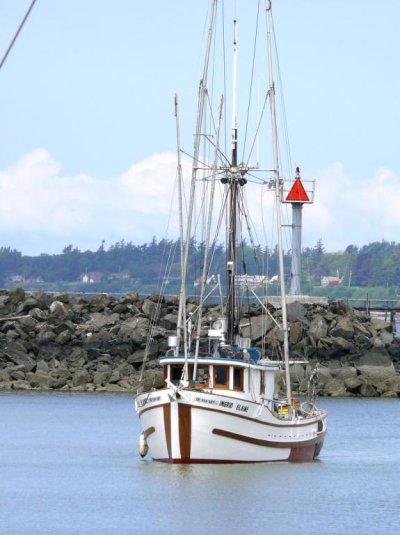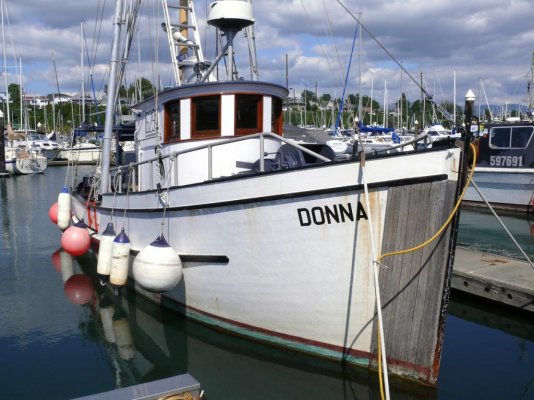A popular type of boat in this area is the so-called fishboat conversion, particularly in British Columbia.* I don't know if this is still going on, but at one point BC had a buy-back program as a result of increasing restrictions on salmon fishing.* The government would buy a fisherman's boat in a rather sorry attempt to compensate them for restricting their livelihood out from under them.* These boats were then sold or auctioned with the condition that they not be used for fishing.* As a result, there are a lot of good, not-so-good,a nd downright terrible conversions to recreational trawlers up there.
I happen to think the lines of the typical coastal commercial fishboat in this area are the most aesthetic I've ever seen, so it's neat to see one of these boats that's been converted to a recreational boat but still retains the look of the original.* This is one of the best examples I've ever seen of a fishboat conversion.* This boat was in the Nanaimo public boat basin the same time we were the other week.* I have no idea what she looks like inside, but the outside is terrific.
I happen to think the lines of the typical coastal commercial fishboat in this area are the most aesthetic I've ever seen, so it's neat to see one of these boats that's been converted to a recreational boat but still retains the look of the original.* This is one of the best examples I've ever seen of a fishboat conversion.* This boat was in the Nanaimo public boat basin the same time we were the other week.* I have no idea what she looks like inside, but the outside is terrific.




